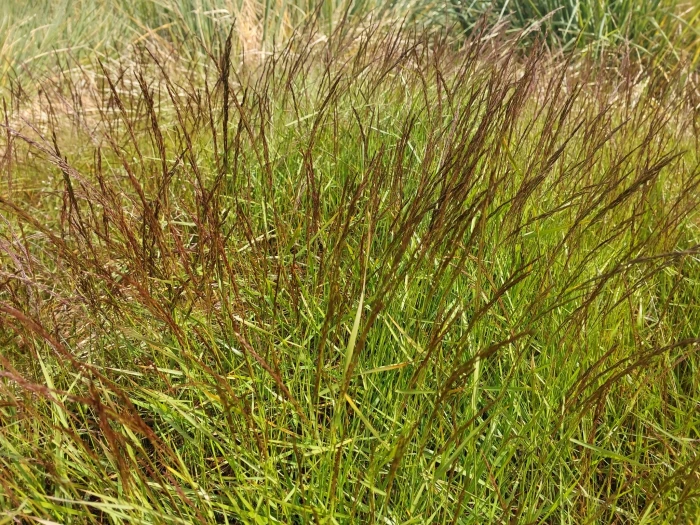Colonial Bent
(Agrostis capillaris)
Colonial Bent (Agrostis capillaris)
/
/

© Michael Lavery
CC BY 4.0
Image By:
© Michael Lavery
Recorded By:
Copyright:
CC BY 4.0
Copyright Notice:
Photo by: © Michael Lavery | License Type: CC BY 4.0 | License URL: http://creativecommons.org/licenses/by/4.0/ | Uploader: laverymike | Publisher: iNaturalist |

























Estimated Native Range
Climate Requirements for New Lenox, Illinois
| This Plant | Your Site | Plant Suitability for Your Location | ||
|---|---|---|---|---|
| • Precipitation | 5" - 182" | 37" | Aquatic | Aquatic |
| • High Temp. | 33°F - 109°F | 85°F | Your summer temperatures are normal for this plant. | Excellent |
| • Low Temp. | -37°F - 62°F | 13°F | Your winter temperatures are normal for this plant | Excellent |
This plant may not grow well at your location - your precipitation is too high.
Summary
Agrostis capillaris, commonly known as colonial bent or browntop, is a perennial grass native to temperate Eurasia and has been introduced to many other regions, including North America and New Zealand. It is commonly found in moist grasslands, meadows, and disturbed areas, often thriving in open, sunny environments. Colonial bent prefers neutral to acidic soils and is well-adapted to a range of soil types, provided they are well-drained. This grass typically forms a dense sward of fine leaves and can grow to a height of 4-28 inches. The flowering panicles are delicate and airy, appearing from late spring to early summer (May to June), and can create a purple haze over the grassland when in bloom.
Colonial bent is valued for its fine texture and ability to form a dense turf, making it a popular choice for lawns, golf courses, and as a ground cover in temperate landscapes. It is also used for erosion control due to its dense root system. However, its potential for invasiveness should be considered before planting, as it can spread aggressively in some regions. In cultivation, it requires regular mowing to maintain a neat appearance and can tolerate a range of light conditions from full sun to partial shade. While it is drought-tolerant once established, it performs best with consistent moisture.CC BY-SA 4.0
Colonial bent is valued for its fine texture and ability to form a dense turf, making it a popular choice for lawns, golf courses, and as a ground cover in temperate landscapes. It is also used for erosion control due to its dense root system. However, its potential for invasiveness should be considered before planting, as it can spread aggressively in some regions. In cultivation, it requires regular mowing to maintain a neat appearance and can tolerate a range of light conditions from full sun to partial shade. While it is drought-tolerant once established, it performs best with consistent moisture.CC BY-SA 4.0
Plant Description
- Plant Type: Grass
- Height: 0.5-1.5 feet
- Width: 1-2 feet
- Growth Rate: Moderate, Rapid
- Flower Color: N/A
- Flowering Season: Spring, Summer
- Leaf Retention: Deciduous
Growth Requirements
- Sun: Full Sun, Part Shade
- Water: Medium, High
- Drainage: Fast, Medium, Slow
Common Uses
Erosion Control, Groundcover, Low Maintenance, Water Garden
Natural Habitat
Native to temperate Eurasia and introduced to many other regions, commonly found in moist grasslands and meadows
Other Names
Common Names: Common Bent, Browntop, Browntop Bent, Colonial Bent, Colonial Bent Grass, Common Bent Grass, Gewoon Struisgras
Scientific Names: Agrostis capillaris, Agrestis polymorpha, Agrostis alba, Agrostis alba subsp. sylvatica, Agrostis alba subsp. vulgaris, Agrostis alba subsp. vulgaris, Agrostis alba subsp. vulgaris, Agrostis alba var. aristata, Agrostis alba var. minor
GBIF Accepted Name: Agrostis capillaris